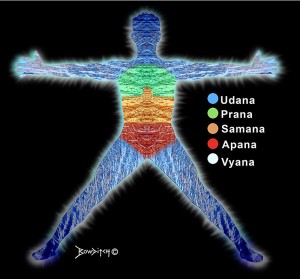Boston-area yoga teacher Erica Magliaro is writing in with a guest post!
She went down to Costa Rica awhile back at my suggestion to study with our teachers, Don and Amba Stapleton, and she came back a fabulous yoga teacher!
She’s offering classes in Brookline, and also Pranassage, which is yummy yoga massage. Check out her website for details.
—-
Ever find yourself in pigeon pose, jaw clenched, shoulders tense, unable to relax?
What about lying in savasana, trying to focus but instead mulling over your last conversation with your boss or your significant other?
My teacher has always said, ‘Where the mind goes, Prana flows’, but what happens when we get stuck? Sometimes we find ourselves unable to release physically and/or mentally. Even as a yoga teacher, I can be as guilty of this as the next person….so when I get stuck, I like to remind myself of Prana at work:
Prana is our life force, the energy that flows through our bodies. It is broken down into five forces, called the Prana Vayus:
1) Apana is the downward moving energy in our bodies, grounding us. Gravity is a simple example of apana.
2) The next force of Prana is prana (lower-case ‘p’), which is the upward moving energy, or buoyancy, that counter-acts apana. For me, I can really feel apana and prana at work in Tree Pose…being grounded in the feet, roots growing through the earth…but the buoyancy and lift of the body skywards.
3) Samana is the third force of Prana, spiraling at our belly center. It represents the energy of absorption, the fire of digestion, either physical and emotional. This could be undigested lunch, or a difficult conversation you can’t get out of your head!
4) Udana is the next force of Prana, representing the energy of sound and communication, giving us the ability to express our experience.
5) Last but not least is vyana. Vyana corresponds to the energy pathways in our body, connecting us to ourselves and to others.
I’ve been fortunate enough to fully experience Prana through the giving and receiving of Pranassage, an amazing blend of assisted yoga and massage. The whole idea is that through touch, pressure, and postures, Prana is made easier to feel, allowing us to truly let go into deep relaxation with awareness of our experience.
So the next time you find yourself clenching in a pose or being distracted, try to remind yourself that it’s okay to let go and focus on the present moment…..allowing Prana to flow.
Namaste,
Erica

The 5 Prana Vayus